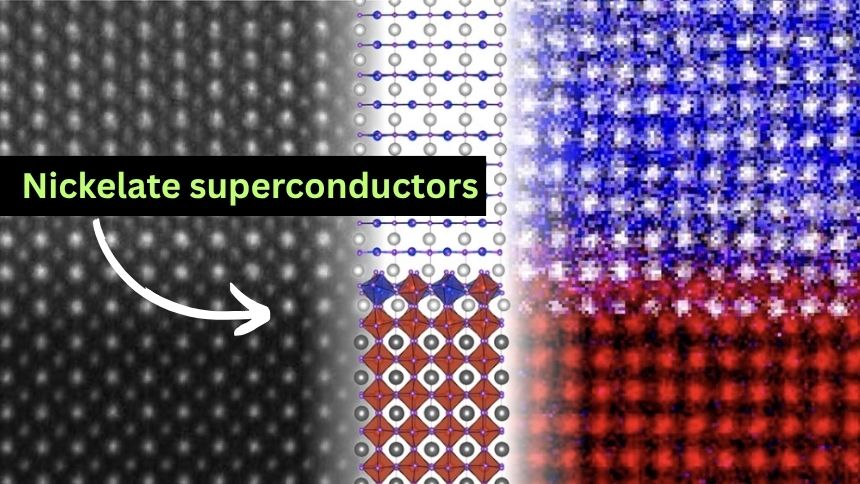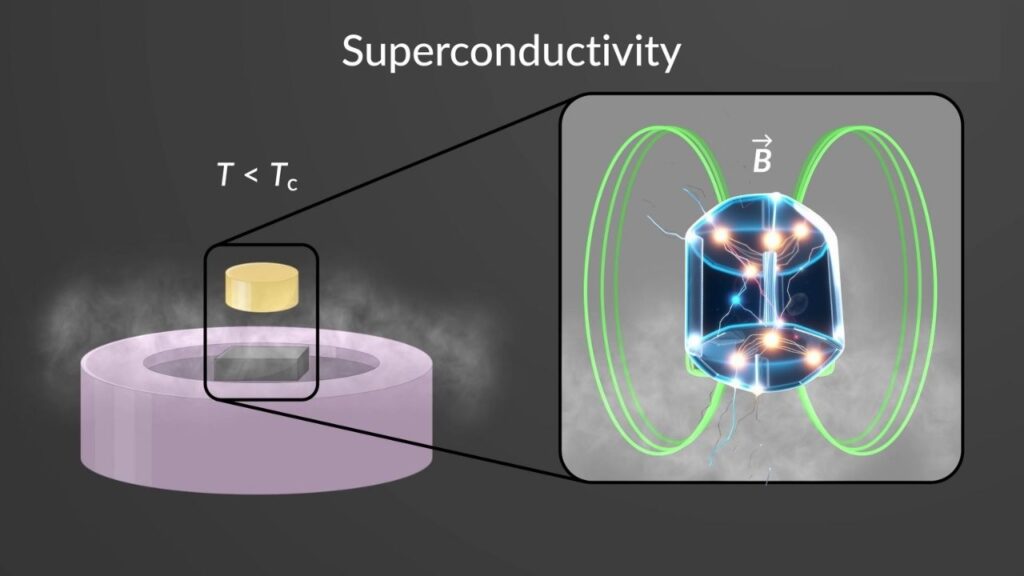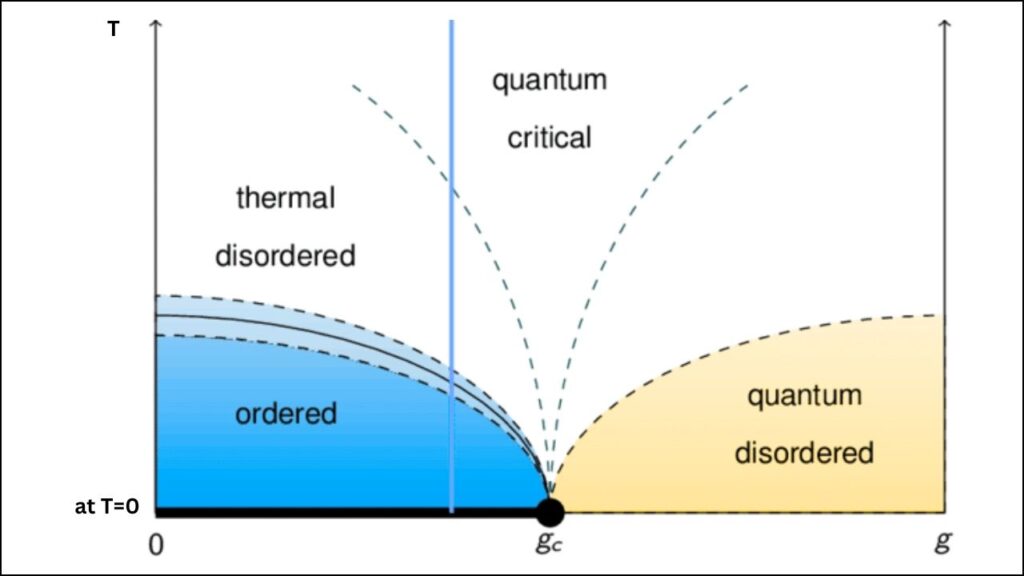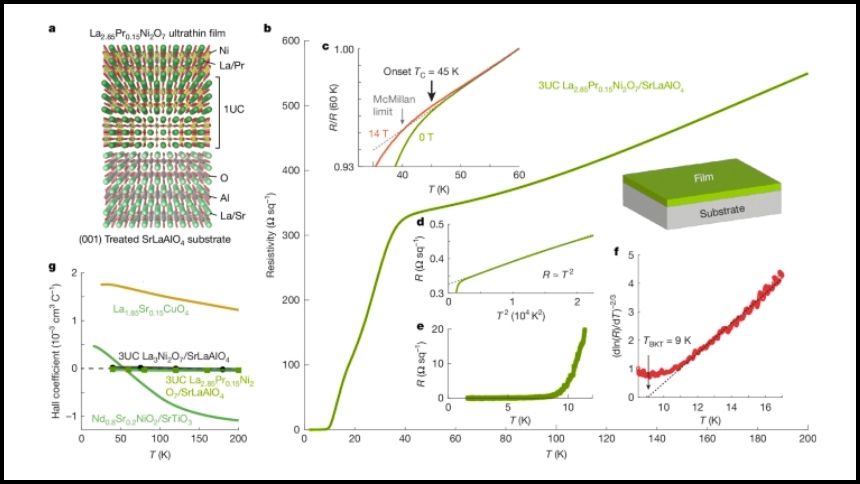Superconductivity is a fascinating phenomenon where certain materials conduct electricity with zero resistance, meaning no energy is lost as heat. Imagine electricity flowing on a frictionless superhighway where it never slows down. Recently, scientists have triggered a wild quantum switch in exotic materials, revealing surprising behaviors that break the traditional rules of superconductivity. This discovery advances our understanding of quantum physics and holds vast potential for revolutionary technologies, from ultra-efficient energy systems to powerful quantum computers.

Table of Contents
Scientists Trigger a Wild Quantum Switch in Exotic Material
| Aspect | Details |
|---|---|
| Phenomenon | Wild quantum switch realized in exotic superconducting materials |
| Recent breakthroughs | Large-scale quantum simulations with 48 qubits; discovery of abrupt quantum phase transitions |
| Temperature record | Nickelate superconductors operating above 40 Kelvin (-233°C) at ambient pressure |
| Implications | More efficient power grids, advanced MRI machines, maglev transport, quantum computing breakthroughs |
| Leading research groups | Southern University of Science and Technology (China), Microsoft Station Q, Quantinuum |
| Career insight | Fields include quantum materials science, condensed matter physics, quantum hardware development |
| Official reference link | Nature Physics |
The discovery of a wild quantum switch in exotic superconducting materials signals a revolutionary leap in quantum physics. This switch enables materials to suddenly change their electronic states, breaking long-held rules and paving the way for practical quantum technologies. Through innovative quantum hardware like topological qubits and novel materials such as nickelates, the future of energy transmission, medical technology, transportation, and computing looks poised for transformation. Staying informed and engaged with these advances is vital for professionals shaping tomorrow’s technology landscape.
What Is Superconductivity and Why Does It Matter?
Superconductivity occurs when a material can carry electric current without any resistance. Normally, electrons moving through wires collide with atoms, wasting energy as heat. But in superconductors, below a certain critical temperature, electrons pair up and flow effortlessly, enabling perfectly efficient electricity transmission.

The limitation has been that most superconductors only work near absolute zero (−273°C), making them costly and impractical for broad usage. Understanding and controlling superconductivity at higher, more practical temperatures and under ambient conditions is a long-sought goal with huge technological impact.
The Wild Quantum Switch: New Rules of Superconductivity
The Discovery Explained
Scientists have discovered a dramatic quantum switch phenomenon in exotic materials, where a tiny external change—such as a small tweaking of voltage—can flip the material instantly from an insulator to a superconductor. This jump is not gradual but a sharp quantum phase transition, where the fundamental quantum state of electrons changes abruptly.

This phenomenon defies classical superconductivity theory, unlocking the potential to tune superconductivity using controllable quantum states. The materials exhibiting this behavior often have complex electronic structures with heavy electron interactions and magnetic influences, resulting in exotic quantum effects like directional electron flows and “quantum echoes.”
How Scientists Study This
Researchers use advanced quantum computers and simulators to model the behavior of superconductors on an atomic scale. For instance, teams like Quantinuum have simulated complex electron interactions involving 36 fermionic modes encoded in 48 qubits, exceeding prior simulation capacities. These simulations help unravel complicated quantum physics models, such as the Fermi-Hubbard model, revealing hidden quantum orders and interactions driving superconductivity.
Microsoft’s research focuses on topological qubits built from a novel class of materials called topoconductors, which merge semiconductor and superconductor properties. These devices rely on exotic quasiparticles called Majorana zero modes that naturally protect quantum information, a breakthrough step toward error-resistant quantum computing.
From Lab Discoveries to Real-World Impact
New High-Temperature, Ambient-Pressure Superconductors

A major breakthrough occurred in early 2025 when scientists at the Southern University of Science and Technology developed a nickelate superconductor working at 40 Kelvin (-233°C) without requiring high pressure. This is remarkable because most high-temperature superconductors need extreme pressures or reach lower temperatures to work.
This advancement could revolutionize:
- Energy Transmission: Power grids with zero energy loss during transmission, leading to enormous savings and sustainability gains.
- Medical Technology: Reduction in MRI machine costs through more accessible superconducting magnets.
- Transportation: More efficient and affordable maglev trains, which use superconducting magnets to levitate and glide.
- Quantum Computing: Creation of more stable, scalable qubits that could speed up computing performance dramatically.
Twisting Layers to Control Superconductivity
Scientists at institutions like the RIKEN Center have shown that by twisting ultra-thin layers of superconducting materials at precise angles, they can tune the superconducting properties. This approach allows fine control over the superconducting gap—the energy that keeps electron pairs together—which is critical for improving quantum device performance and energy efficiency.
Understanding the Science in Simple Terms
Step 1: What Is a Quantum Phase Transition?
Think about water suddenly freezing into ice—that’s a typical phase transition. A quantum phase transition is similar but happens at near absolute zero temperature, where tiny changes like a small voltage adjustment cause the material to flip its electronic state drastically, from insulator to superconductor.
Step 2: What Are Qubits and Why Do They Matter?
Qubits are the quantum equivalent of classical bits in a computer. They can represent 0, 1, or both simultaneously due to quantum superposition. This property makes qubits ideal for simulating complex quantum materials like superconductors, revealing phenomena impossible to compute with traditional machines.
Step 3: What Are Exotic Materials?
Exotic materials are those in which electrons behave unusually, often due to complex internal structures or special electron interactions. For example, combining a Weyl semimetal with spin ice produces unique directional electron flows and novel quantum states. Such materials can host the wild quantum switches scientists are now exploring.
Practical Advice for Professionals and Enthusiasts
- Students and Researchers: Build a strong foundation in quantum mechanics, materials science, and quantum computing principles. Stay curious about developments in quantum simulations and unconventional superconductors.
- Industry Professionals: Monitor advancements in quantum hardware and new superconducting materials, which promise opportunities in energy, healthcare, and computing sectors.
- Science Enthusiasts: Follow authoritative science outlets, journals, and companies pioneering in quantum research for accessible insights into these breakthroughs.
Breakthrough Material Could Become the Future of Quantum Information Storage
Metasurfaces Could Be the Future of Quantum Computing—Here’s Why Everyone’s Talking
Quantum Skyrmions Created with Light: Why Nanophotonics Is Entering a Brand New Era
FAQs About Scientists Trigger a Wild Quantum Switch in Exotic Material
Q1: What is a quantum switch in superconductors?
A quantum switch is an abrupt change in a material’s electronic state from an insulating state to superconducting behavior, triggered by subtle external influences, reflecting a quantum phase transition.
Q2: How could these discoveries affect everyday life?
They could lead to devices and systems with zero energy loss, such as highly efficient power grids, affordable MRI machines, enhanced maglev trains, and more powerful quantum computers.
Q3: What distinguishes traditional from exotic superconductors?
Traditional superconductors require extremely low temperatures and often simple materials, while exotic superconductors involve complex materials like nickelates and exhibit novel quantum behaviors that allow higher operational temperatures or unique properties.
Q4: Are quantum computers practical tools now for superconductor research?
Quantum computers have recently reached a stage where they can simulate challenging quantum materials beyond classical capabilities, significantly improving our understanding of superconductivity.



















